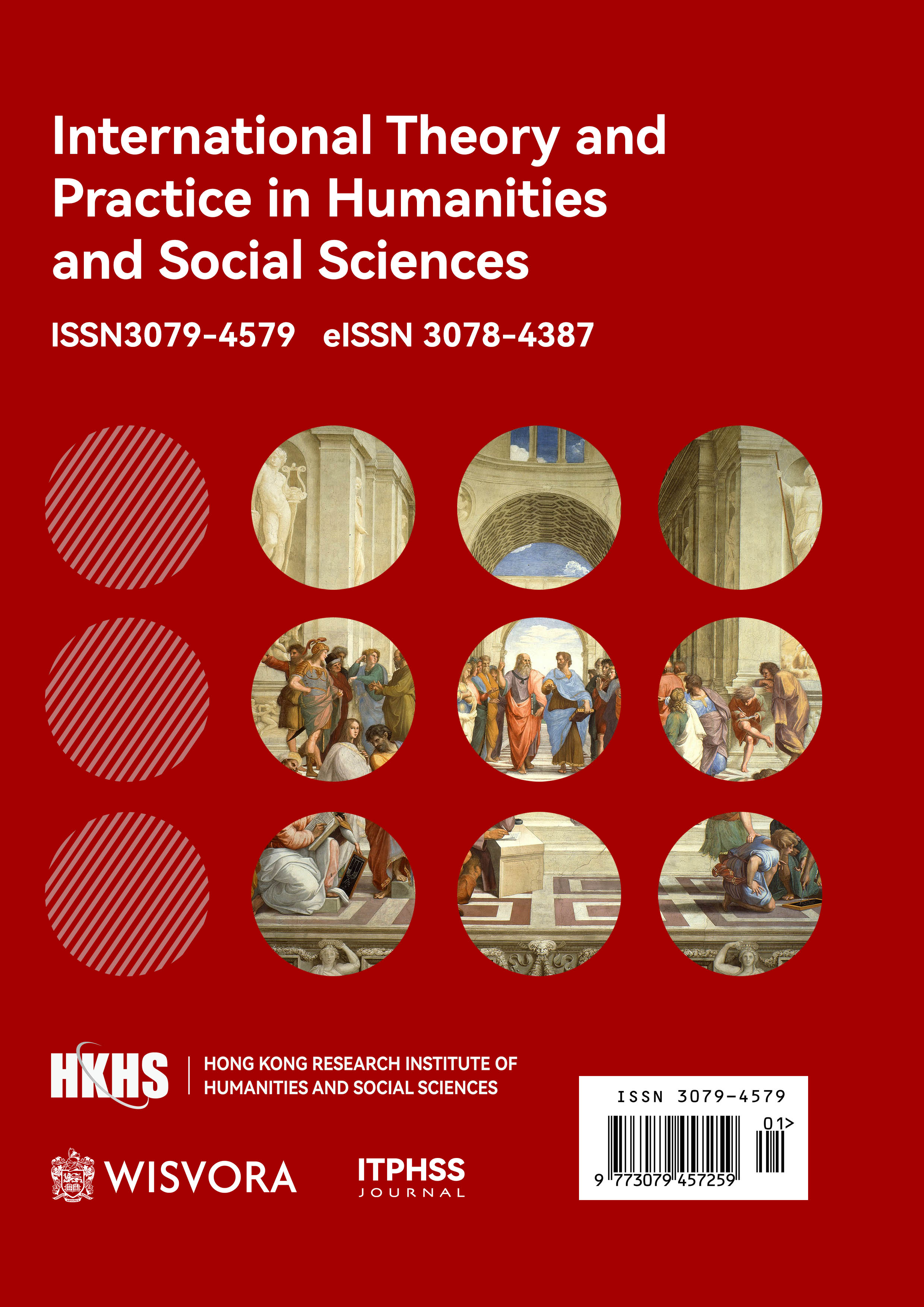Abstract
The "Belt and Road" initiative has brought development and convenience to countries along its route, while also providing a platform and opportunities for educational cooperation and exchange between nations. The educational cooperation between China and Mongolia, benefiting from their natural geographical and historical advantages, has become even more accessible. This paper aims to explore new development paths for this cooperation and lay a foundation for the collaborative progress of education between the two countries. The research primarily adopts a literature review method, supplemented by logical analysis, to summarize and clarify the forms and characteristics of current educational cooperation between China and Mongolia. The study identifies several challenges in further cooperation, including language barriers, differences in understanding, cooperation models, and educational resource disparities. However, it suggests that these challenges can be addressed through measures such as strengthening language training, sharing educational resources, and deepening cooperative mechanisms. By enhancing and promoting deeper educational cooperation between China and Mongolia, leveraging each other's strengths, and fostering mutual learning, both countries' educational development can be steadily advanced. This will contribute to the continuous flow of talent between China and Mongolia and provide a reference for future educational cooperation and exchange between the two nations.
References
Xi Jinping. (2014, August 22). Xi Jinping's speech at the State Great Khural of Mongolia. China Communist Party News. http://cpc.people.com.cn/n/2014/0822/c64094-25522187.html.
Kong Genhong. (2014). Advancing the "Belt and Road" Initiative: Key Relationships to Address. China Investment, (10), 47-49+46. doi: CNKI:SUN:ZGTZ.0.2014-10-040.https://chn.oversea.cnki.net/KCMS/detail/detail.aspx?dbcode=CJFD&dbname=CJFD2014&filename=ZGTZ201410040&uniplatform=OVERSEA&v=CwVSefC-G9UkhDXpLn5Bc-M1wiC2QJQOXRRqAAtuTQB9iynB8L4Dcq76vfC69ahX.
Yu Jinping & Gu Wei. (2016). Interests, risks, and strategies in the construction of the 'Belt and Road.' Nankai Journal (Philosophy and Social Sciences Edition), 01, 65-70.https://chn.oversea.cnki.net/KCMS/detail/detail.aspx?dbcode=CJFD&dbname=CJFDLAST2016&filename=LKXB201601004&uniplatform=OVERSEA&v=OpNuGpPe6-qdx8dzBC892sBhOzsQ1IDL0il8f5_igtGUignF8UiY3veU4ndoaRNN.
Yi Liqi. (2023). Sino-Mongolian film and cultural exchange under the perspective of the 'Belt and Road' initiative. Film Review, 24, 42-48. doi:10.16583/j.cnki.52-1014/j.2023.24.004.https://chn.oversea.cnki.net/KCMS/detail/detail.aspx?dbcode=CJFD&dbname=CJFDLAST2024&filename=DYPJ202324007&uniplatform=OVERSEA&v=uRjQBdxrX_J96kTjltMMqAJODaTPbVyFvOYdPVsdHNfyMa6vAyubL-DTWF_QaNVx.
Yuan Hepeng. (2023). Research on Sino-Mongolian Coal Cooperation under the Carbon Peak and Carbon Neutrality Targets (Master's thesis, Lanzhou University). Master's thesis. https://link.cnki.net/doi/10.27204/d.cnki.glzhu.2023.002098. doi:10.27204/d.cnki.glzhu.2023.002098.
Du Shufang. (2023). Sino-Mongolian Ecological Cooperation under the Belt and Road Initiative. Journal of Environmental Protection, 42(7), 58-65.https://chn.oversea.cnki.net/KCMS/detail/detail.aspx?dbcode=CJFD&dbname=CJFDLAST2023&filename=BFJJ202303012&uniplatform=OVERSEA&v=NR0eY1PQKt-_3cbB5Jz0l6bwAcIyoNbjpJ7kfRIez8Tgu1PAQ-pmb4lphZDEFLrV.
Wang Jingfeng & Feng Liwei. (2022). Study on the Mechanism and Model of Sino-Mongolian-Russian Higher Education Cooperation. Border Economics and Culture, 10, 11-17.https://chn.oversea.cnki.net/KCMS/detail/detail.aspx?dbcode=CJFD&dbname=CJFDLAST2022&filename=BJJJ202210003&uniplatform=OVERSEA&v=LWoRmfzp8slStbkZm8d4Hh6l2KPaGgOHDLj9GArethQjNtFj1Mz7awTte_t7gadA.
Jiang Yongzhi & Bai Hongmei. (2022). The Construction of Sino-Mongolian-Russian Ethnic Education Think Tanks under the Belt and Road Initiative: Value, Dilemmas, and Pathways. Frontiers, 04, 128-136. doi:10.14129/j.cnki.forwordposition.2022.04.003.
Zhang, Guoqing & Ma, Liguo. (2021). "The Current Status and Prospects of China-Mongolia Educational and Cultural Relations under the Belt and Road Initiative." Inner Mongolia University of Electric Power Journal, 06, 20-24. doi:10.16162/j.issn.1672-3473.2021.06.005.
Johnston, L. A. (2019). The Belt and Road Initiative: What is in it for China. Asia & the Pacific Policy Studies, 6(1), 40-58.
Schulhof, V., Van Vuuren, D., & Kirchherr, J. (2022). The Belt and Road Initiative (BRI): What will it look like in the future?. Technological Forecasting and Social Change, 175, 121306.
Lin, W., & Iftikhar, R. (2024). Belt and Road Initiative: Promoting Connectivity. Journal of Development and Social Sciences, 5(2), 743-751.
Baasandulam, M. (2020). Research on China-Mongolia Economic and Trade Cooperation. International Journal of Innovative Technologies in Economy, 4(31).
Bao, S. (2024). The Study of Mutual Benefits and Potential in China-Mongolia Agricultural Trade. Proceedings of Business and Economic Studies, 7(3), 200-205.
Buyandlai, E., Lkhagvajav, A., & Bayartsogt, M. (2024). The Impact of China's Soft Power on the Educational Development of Young Mongolians. In Soft Power and Diplomatic Strategies in Asia and the Middle East (pp. 267-297). IGI Global.
Ministry of Education of the People's Republic of China. (2008, April 25). Introduction to Confucius Institutes. Ministry of Education of the People's Republic of China. http://www.moe.gov.cn/srcsite/zsdwxxgk/200712/t20071231_61844.html.

This work is licensed under a Creative Commons Attribution-NonCommercial 4.0 International License.
Copyright (c) 2025 Hongyang jia (Author); Batu Liu (Co-Authors)

